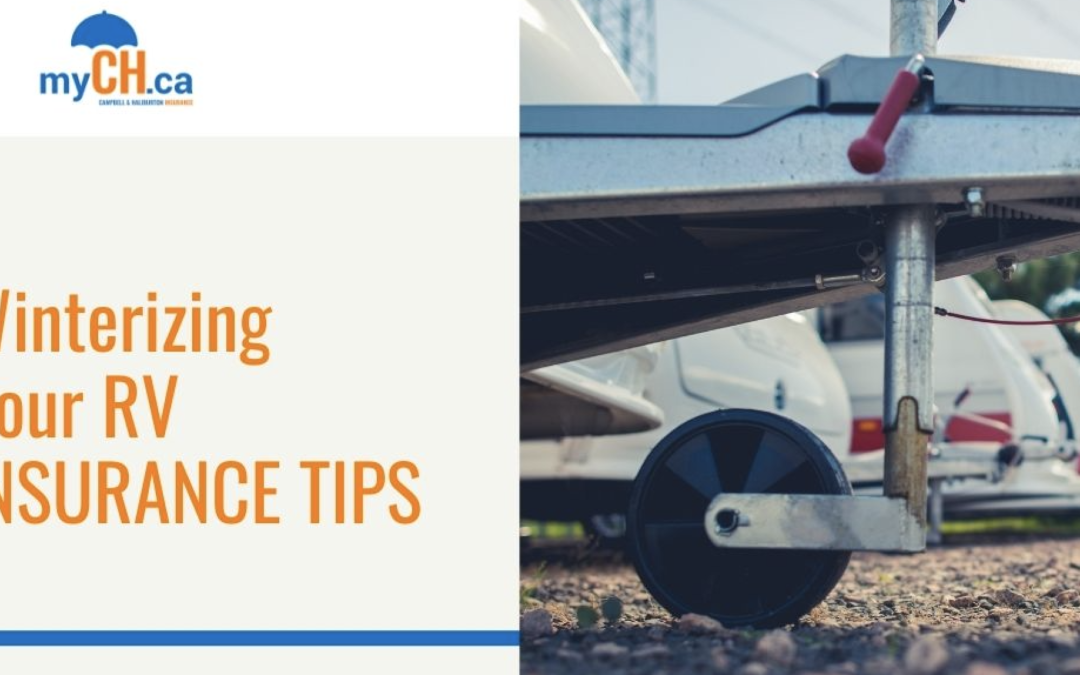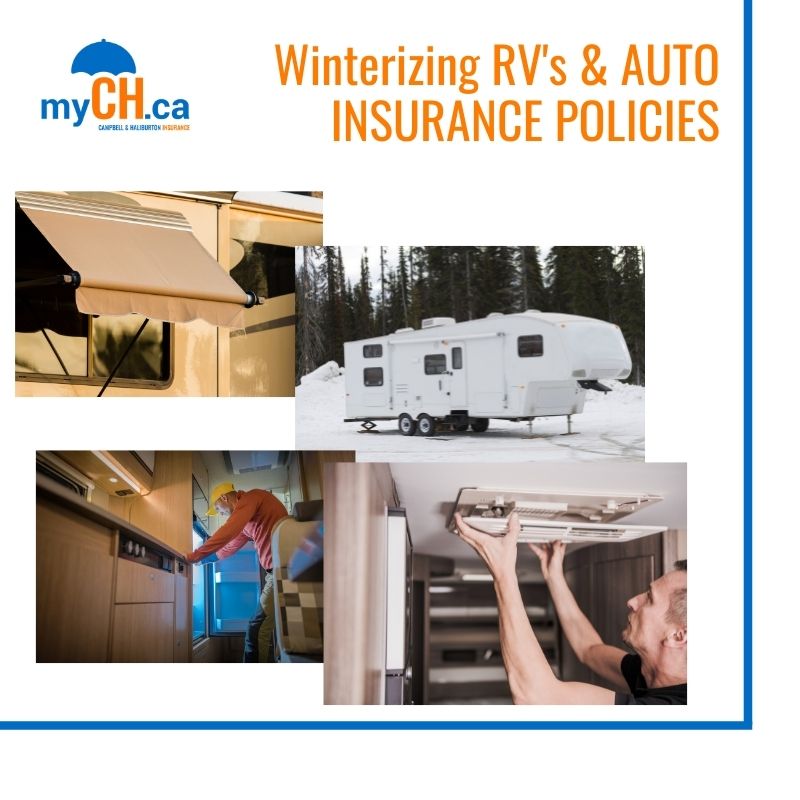Fall is here, but winter is coming! Therefore, the camping season is over for another year. Before you put your trailer or motorhome in storage, make sure you take the time to protect it for winter. While it seems like a lot of work, the extra effort you put in now will protect your vehicle from deterioration. With a little bit of elbow grease, your RV will last for many camping seasons to come. In our latest Campbell & Halliburton Regina auto insurance blog, we share SGI tips on winterizing your RV!
10 Step RV Winterizing Guide
Step 1: Drain the water from your pipes
You should start by draining the water from your pipes. When this is complete, pump RV antifreeze into all of your tanks, lines and drains. Due to Saskatchewan’s subzero temperatures, it’s important to use RV antifreeze. Make sure it’s rated to -50 degrees C.
Step 2: Check your seals
Leaky roofs can cause major problems to the inside of your RV. The best way to avoid problems is to inspect your seals and ensure that there are no leaks. This includes examining your roof, slide-outs and windows to look for any holes or leaks.
Step 3: Remove your RV batteries
If you plan on putting your RV in storage, take out your batteries and put them in a cool, dry place or on a charger.
Step 4: Protect your RV’s exterior
Clean the outside of your RV and inspect it for any cracks. Use an RV sealant to fix the crack(s) and let it dry completely. Then, apply wax to protect your vehicle.
Step 5: Protect your awning
Stop mould from growing on your awning by cleaning it thoroughly and allowing it to dry completely.
Step 6: Unhook your propane tanks
Store them in a well-ventilated area in order to prevent rust or damage.
Step 7: Lubricate all locks and hinges
Letting your RV sit untouched for months can cause the locks and hinges to get sticky or stop working completely. Save yourself a hassle the next camping season and lubricate all of your locks and hinges right now.
Step 8: Clean the interior
A clean and sanitized interior can make a world of difference when it comes to avoiding unwanted smells and rodents from entering your RV.
Step 9: Tarp, cover and moisture prevention
Most tarps are made of non-breathable materials, and this can cause moisture to get trapped underneath – leading to rust. We recommend choosing a breathable fabric cover to prevent water and condensation.
Contact Your Broker at Campbell & Halliburton
You’re almost done! Now it’s time to let your insurance broker know that you’re putting your trailer in storage. Your SGI CANADA Auto Pak may cover damage caused to your RV while in storage – as long as you meet the conditions of your policy. Further, we can help you work through the conditions.
As you walk out of our door, you can do so with the assurance that you are covered with the auto insurance that best meets your needs. If you don’t have an insurance broker and want to talk to someone who is truly passionate about your insurance, contact us at Campbell & Haliburton Insurance. We would love to help you.
**(This is a general overview. There are many different insurance companies and there are always differences in insurance policies. For specific details on your policy and coverage, we recommend that you contact your agent or broker).


